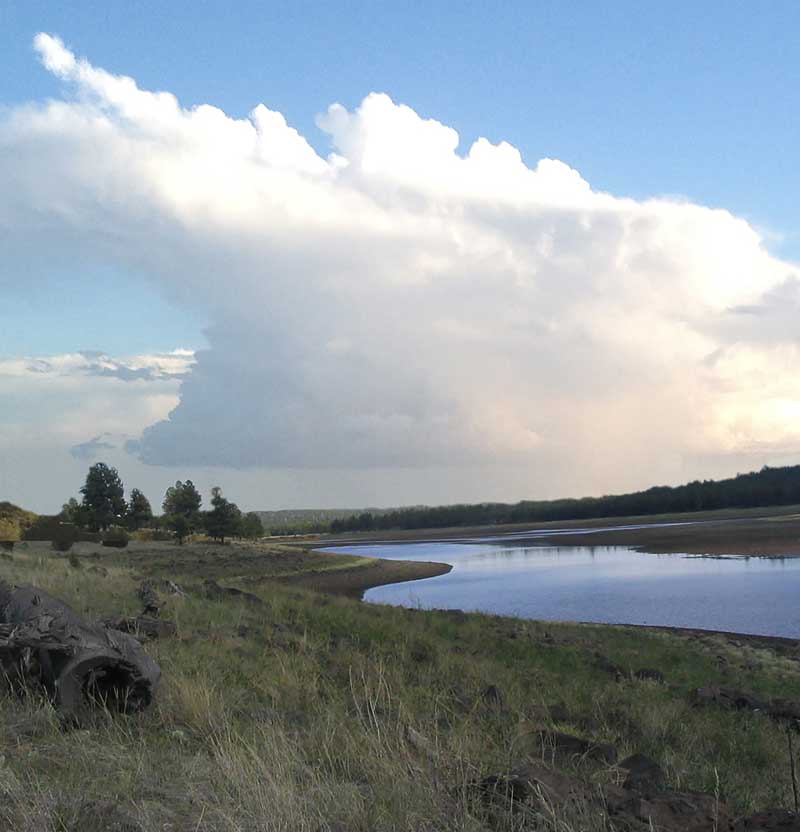Tribal PFAS Working Group
What is PFAS?
Per- and polyfluoroalkyl substances (PFAS) are a group of man-made chemicals that were developed in the 1940s. PFAS are found in many elements within our environment including food packaging, commercial household products, and firefighting foam, among others. PFAS are persistent chemicals and may accumulate in the human body for a long time. PFAS remain in the environment for a long period of time due to their strong chemical bonds. PFAS pose a risk to tribal lifeways, resources, and traditional foods.
Background
The Tribal PFAS Working Group (TPWG) formed in April 2020 to help address and reduce PFAS in Indian Country. The working group is comprised of members of the National Tribal Water Council, Tribal Science Council, National Tribal Toxics Council, Tribal Waste and Response Steering Committee, and Tribal Pesticide Program Council.
The working group holds monthly meetings to discuss various activities that would help achieve its objectives and priorities, and at the same time learning and understanding the implications of PFAS in tribal communities. The working group created a brochure that provides an overview of its activities.
Tribal PFAS Working Group Brochure [pdf]
The Tribal PFAS Working Group in collaboration with the PFAS Project Lab developed a fact sheet titled “PFAS and Your Health: A Resource for Tribal Communities.” The fact sheet provides information on the health concerns, exposure pathways, and ways to reduce exposure to PFAS. The Tribal PFAS Working Group would like to thank Kira Mok and the PFAS Project Lab for their assistance in developing the fact sheet. For more information on the PFAS Project Lab, please visit: www.pfasproject.com.
Tribal PFAS Fact Sheet [pdf]
Priorities
Tribal PFAS Working Group Priorities
The Tribal PFAS Working Group members reviewed and updated their key priorities for 2025 to continue researching the impacts of PFAs on tribes. The working group identified six (6) key priorities, which include the following
- Identify tribes and coordinate with tribes that are currently impacted by PFAS.
- Develop and identify PFAS tools and resources.
- Promote the Tribal PFAS Working Group’s webpage with current publications, presentation videos, research, and resources.
- Advocate for rulemaking, research, and education actions, with attention to inclusion of tribal lifeways.
- Develop and host tribal webinars / workshops on PFAS issues.
- Expand the scope of the working group to explore and research emerging contaminants and their impacts on various environmental media, including air quality.
A copy of the Tribal PFAS Working Group Priorities may be accessed by clicking HERE.
Presentations
Tribal PFAS Working Group – 2025 Open House Webinar “Model Predicts PFAS Buildup in Wild Animals”
On June 12, 2025, the working group held an open house webinar that featured a presentation on” Model Predicts PFAS Buildup in Wild Animals” from Dr. Elsie Sunderland, Harvard University. The recorded webinar may be accessed at: https://mediaspace.nau.edu/media/Tribal+PFAS+Working+Group+2025+Summer+Webinar/1_lepqgcpp/116196612
Tribal PFAS Working Group – 2024 Open House Webinar “PFAS in the Southern Plains”
On December 12, 2024, the working group held an open house webinar that featured a presentation on “PFAS in the Southern Plains” from Isabella Gandara, a student from the Massachusetts Institute of Technology. The recorded webinar may be accessed at: https://mediaspace.nau.edu/media/Tribal+PFAS+Working+Group+Open+House+Webinar%3A+
PFAS+in+the+Southern+Plains/1_9ap6zl90/116196612.
2024 ITEP Tribal Lands and Environment Forum – Recording of PFAS 101 Presentation
Page Hingst and Kaylene Ritter presented and moderated the “PFAS 101” one-day training at the 2024 Tribal Lands and Environment Forum on August 12, 2024. The recording of the presentation may be found at: https://mediaspace.nau.edu/channel/2024+Tribal+Lands+and+Environment+Forum/349437462.
Tribal PFAS Working Group – Recorded Presentations
The Tribal PFAS Working Group conducts monthly calls and invites subject matter experts to learn more about PFAS. Recorded presentations conducted during the meetings may be accessed at: https://mediaspace.nau.edu/channel/National%2BTribal%2BWater%2BCouncil/116196612.
Tribal PFAS Working Group – Open House Webinar
On December 14, 2023, the working group hosted an open house webinar that provided information on the working group activities and a presentation on PFAS on Tribal Lands from Dr. Kimberly Garrett. Here is a copy of the Dr. Kimberly Garrett’s presentation: PFAS on Tribal Lands. Here is a copy of Page Hingst’s presentation: TPWG Open House. The recorded webinar may be accessed at: https://mediaspace.nau.edu/media/Tribal+PFAS+Working+Group+Open+House+Webinar/1_f4bbr9kh/116196612
2021 ITEP Tribal Lands and Environment Forum: Tribal PFAS Working Group Presentation
The Tribal PFAS Working Group presented at the ITEP Tribal Lands and Environment Forum on August 18, 2021. Here is a copy of the presentation on PFAS in Indian Country Map: PFAS in Indian Country [pptx]
Publications
EPA Releases Final PFAS Aquatic Life Criteria and Benchmarks
On October 1, 2024, the U.S. Environmental Protection Agency finalized science-based water quality concentrations for 10 PFAS that will help states and tribes protect fish and other aquatic life as part of its PFAS Strategic Roadmap. The levels, referred to as water quality criteria and benchmarks, are not regulatory and are not required. States and Tribes can consider using them to develop water quality standards which inform the implementation of other Clean Water Act programs, like wastewater discharge permits. For more information, please visit: https://www.epa.gov/wqc/pfas-and-aquatic-life.
EPA Releases New Science-Based Recommendations to Help More States, Tribes, and Territories Reduce Exposure to PFAS in Fish
On July 11, 2024, the EPA published updated recommendations for contaminants that Tribal, state, and territorial fish advisory programs should consider monitoring in locally caught fish to protect public health. The EPA’s latest recommendations consist of two lists of fish tissue contaminants, both of which include several per- and polyfluorinated substances (PFAS). Please see the press release and view the lists of contaminants to monitor on the EPA’s website.
EPA’s Acute 6PPD-q and 6PPD Aquatic Life Screening Values for Freshwater
On June 3, 2024, the EPA’s Office of Water (OW) developed acute aquatic life screening values for two widely distributed rubber-tire associated compounds, 6PPD-Quinone (6PPD-q) and 6PPD. The screening values are based on the latest scientific knowledge about the short-term (acute) toxicity of 6PPD-q and 6PPD to aquatic organisms, including sensitive species like coho salmon, in freshwaters of the U.S. For more information, please visit: https://www.epa.gov/wqc/aquatic-life-criteria-and-methods-toxics#acute.
EPA’s Final Rulemaking Designating PFOA and PFOS as a Hazardous Substance Under CERCLA
On April 19, 2024, the U.S. Environmental Protection Agency finalized a crucial rule to designate two widely used PFAS chemicals, perfluorooctanoic acid (PFOA) and perfluorooctanesulfonic acid (PFOS), as hazardous substances under the Comprehensive Environmental Response, Compensation, and Liability Act (CERCLA), improving transparency and accountability to clean up PFAS contamination in communities. To read the final rule, please visit: https://www.epa.gov/superfund/designation-perfluorooctanoic-acid-pfoa-and-perfluorooctanesulfonic-acid-pfos-cercla
EPA’s Final PFAS National Primary Drinking Water Regulation
On April 10, 2024, EPA announced the final National Primary Drinking Water Regulation (NPDWR) for six PFAS. EPA finalized a National Primary Drinking Water Regulation (NPDWR) establishing legally enforceable levels, called Maximum Contaminant Levels (MCLs), for six PFAS in drinking water. PFOA, PFOS, PFHxS, PFNA, and HFPO-DA as contaminants with individual MCLs, and PFAS mixtures containing at least two or more of PFHxS, PFNA, HFPO-DA, and PFBS using a Hazard Index MCL to account for the combined and co-occurring levels of these PFAS in drinking water. EPA also finalized health-based, non-enforceable Maximum Contaminant Level Goals (MCLGs) for these PFAS. For more information, please visit: https://www.epa.gov/sdwa/and-polyfluoroalkyl-substances-pfas.
EPA’s Final PFAS National Primary Drinking Water Regulation
On April 10, 2024, EPA announced the final National Primary Drinking Water Regulation that establishes legally enforceable levels for six PFAS. To learn more, please visit: https://www.epa.gov/sdwa/and-polyfluoroalkyl-substances-pfas#General
Interstate Technology Regulatory Council’s Updated PFAS Guidance
In September 2023, the Interstate Technology Regulatory Council (ITRC) released an updated PFAS-1 Technical and Regulatory Guidance Document. The guidance includes case studies, stakeholder perspectives, and challenges in addressing PFAS. To access the document, please visit: https://pfas-1.itrcweb.org/
EPA PFAS Strategic Roadmap 2021-2024
On October 18, 2021, the EPA released a PFAS Strategic Roadmap outlining an whole agency approach to address PFAS. The roadmap includes actions and commitments to safeguard public health, protect the environment and hold polluters accountable. To access the roadmap, please visit: www.epa.gov/pfas/pfas-strategic-roadmap-epas-commitments-action-2021-2024
EPA’s Fact Sheet: Human Health Toxicity Assessment for GenX Chemicals
In October 2021, the EPA released a fact sheet on its human health toxicity assessment for hexafluoropropylene oxide (HFPO) dimer acid and its ammonium salt, referred to as “chemicals.” To access the fact sheet, click HERE.
EPA’s Issues in Food Waste Management Paper
In August 2021, the EPA released an issue paper on “Issues in Food Waste Management – Persistent Chemical Contaminants.” The issue paper includes information on PFAS in food waste. To access the issue paper, click HERE.
For more information, please visit: www.epa.gov/land-research/food-waste-research
Additionally, EPA developed a toolkit of materials, such as infographics and fact sheets, for public water systems, local officials, and other entities that need to communicate about PFAS and about EPA’s new drinking water limits on the six PFAS. To access the toolkit, please visit: https://www.epa.gov/sdwa/pfas-communications-toolkit
Resources
Interactive Map on PFAS Contamination on Tribal Lands
With assistance from the Environmental Working Group, an interactive map was developed to show suspected PFAS contamination near tribal lands: www.ewg.org/interactive-maps/PFAS_tribal_lands/map/
The Tribal PFAS Working Group would like to thank the Environmental Working Group for their assistance in developing the interactive map. For more information on the Environmental Working Group, please visit: www.ewg.org/
Consumer Notice’s Information on PFAS Water Contamination and Exposure
Consumer Notice is a trusted source of information on defective products, data breaches, environmental hazards and other threats to human health and safety. Water sources worldwide are increasingly being contaminated with hazardous substances, including per and polyfluoroalkyl substances (PFAS). These harmful chemicals can lead to serious health effects. Here are more information about the dangers of PFAS caused by water contamination through Consumer Notice’s educational resources:
PFAS and Water Contamination: https://www.consumernotice.org/environmental/water-contamination/pfas/
Health Effects of PFAS Exposure: https://www.consumernotice.org/environmental/water-contamination/pfas/health-effects/
Environmental Science & Technology’s Article “Using Geospatial Data and Random Forest to Predict PFAS Contamination in Fish Tissue in the Columbia River Basin, U.S.”
On September 5, 2023, the Environmental Science & Technology published an article on the development of a methodology to identify and characterize the extent of PFAS contamination and human exposure. To access the article: Using Geospatial Data and Random Forest To Predict PFAS Contamination in Fish Tissue in the Columbia River Basin, United States
Washington Post’s Article “Lake Superior’s Forever Chemicals”
On January 12, 2022, the Washington Post published an article on the contamination of fish in Lake Superior and how it is affecting Indigenous tribes and their subsistence. To access the article, please visit: www.washingtonpost.com/magazine/2022/01/12/lake-superior-forever-chemicals/
EPA Announces First Validated Laboratory Method to Test for PFAS in Wastewater, Surface Water, Groundwater, Soils
The EPA, in collaboration with the U.S. Department of Defense (DoD), published a draft of the first EPA-validated laboratory analytical method to test for per- and polyfluoroalkyl substances (PFAS) in eight different environmental media, including wastewater, surface water, groundwater, and soils. This method provides certainty and consistency and advances PFAS monitoring that is essential to protecting public health. This draft method can be used in various applications, including National Pollutant Discharge Elimination System (NPDES) permits.
For more information on CWA Analytical Methods for PFAS, visit: www.epa.gov/cwa-methods/cwa-analytical-methods-and-polyfluorinated-alkyl-substances-pfas
For Frequent Questions about PFAS Methods for NPDES Permits, visit: www.epa.gov/cwa-methods/frequent-questions-about-pfas-methods-npdes-permits
Contact Information:
For additional information about the Tribal PFAS Work Group, please contact Page Hingst (page.hingst@santeeoep.com) or Dianne Barton (bard@critfc.org). For more information on PFAS, please visit: Per- and Polyfluoroalkyl Substances (PFAS) | US EPA
CONNECT WITH US
Elaine Hale Wilson, CPM
Manager
Elaine.Wilson@nau.edu
480-452-6774
Your tax deductible donation supports ITEP’s programming efforts.
Please contact us if you would like to contribute to our endowment or for any additional information regarding donations.


